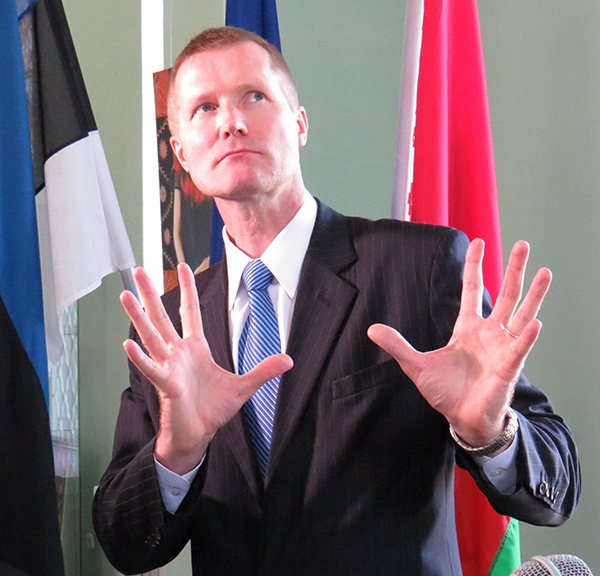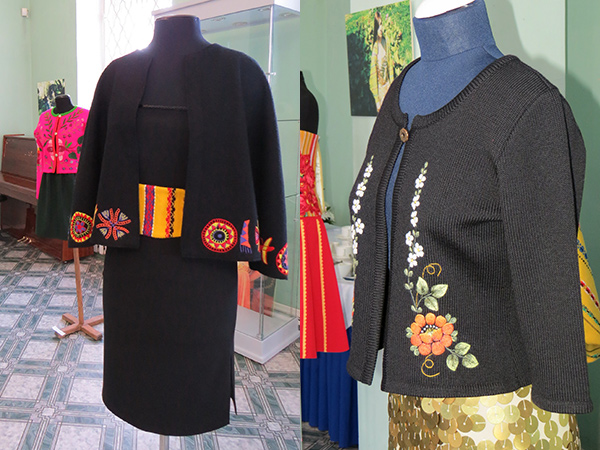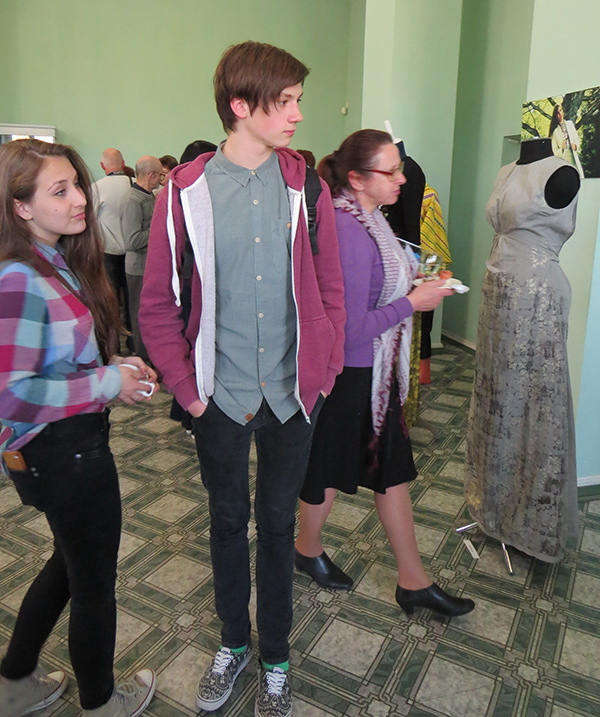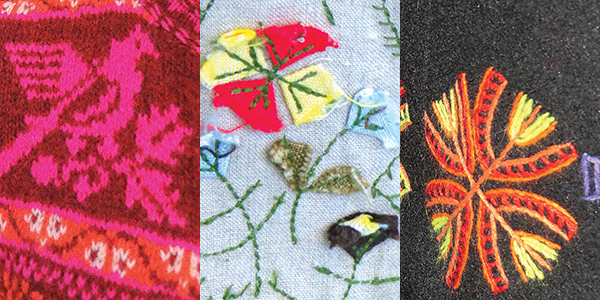
The Ambassador Extraordinary
and Plenipotentiary of Estonia to Belarus, H.E. Mr. Mait Martinson
and Plenipotentiary of Estonia to Belarus, H.E. Mr. Mait Martinson
The second title of the show is Estonian Associations: participating fashion designers have been inspired by traditional crafts and folklore elements, creating a unique flavour. Among those bringing their collections to Vitebsk are Piret Puppart, Diana Denisova, Monika Kisand and Riina Tomberg. Their works are accompanied by Anna Hint’s photos. All would agree that a great way to preserve historical roots and national identity is through national costume.
These talented, inventive and artistic personalities have created an exhibition more than ethnographic in character. Mr. Martinson spoke to journalists before the opening ceremony, noting that his wife loves many of the dresses on show and is ready to wear them daily. “Folk traditions are dear to many and I’m convinced that Belarusians — whose mentality and culture is similar to that of Estonians — will greatly appreciate the show. It’s no secret that, after the USSR’s collapse, our countries chose different paths of development: Estonia moved towards Scandinavia and the EU. However, we shouldn’t forget our neighbours. We’re interested in developing regional ties and hope that our cultural interaction will contribute to the process,” he underlined.

Mr. Martinson has worked in Belarus since last August and admits that he’s always felt respect and warmth towards our country. His brother served in the local army during Soviet times and also has fond recollections of Belarus, which influences Mr. Martinson’s views. The Ambassador speaks of Belarus as a calm and civilised European country, being home to honest, just and industrious people. He believes that it’s not always necessary to travel to remote lands to discover something amazing. “I’m convinced that Belarus can become an attractive holiday destination for Estonians. Our countries are neighbours, living in close proximity but seldom paying visits. Accordingly, we know little of each other. Happily, the situation is changing and top-level delegations are now making visits, which should produce a positive result,” the diplomat noted.
Mr. Martinson was making his first visit to Vitebsk, which he knows primarily as a city of festivals and Marc Chagall’s homeland. He admitted, “A traditionally strong artistic school of talented painters lived here: bright representatives of the boldest artistic directions. For myself, I love realism and classics in pictorial art.”

During his visit to the Belarusian regional centre, the diplomat not only experienced art, fashion and culture but visited Vitebsk City Executive Committee, to discuss issues of further co-operation in the field of business, education and other spheres. “I’m happy that a company with Estonian capital is working here: it’s a Vitebsk sawmill. I hope more joint companies will start operating in Vitebsk District. Vitebsk enjoys strong and friendly ties with its closest neighbours from Lithuania, Latvia, Poland, Russia and Ukraine. We’d love to be known here as well, becoming a ‘gate’ to Scandinavia: our Embassy represents the consular interests of Finland and Sweden (we issue visas to these states in Minsk). We’d like Belarusians to know about this and make use of the opportunity,” the diplomat explained.
Mr. Martinson is convinced that, bearing in mind global competition, small states like Estonia and Belarus need to support each other. “Belarusians know how to promote their goods, as I saw at the Milan Expo. Tourism also plays an important role. Old Tallinn is Estonia’s calling card, in addition to the Baltic Sea islands (such as Saaremaa) and spa services. I have no doubt that the Belarusian tourist industry also has its highlights and it’s only a few hours’ journey between Minsk and Riga by car. It’s not much further to Tallinn or Parnu. I must emphasise that we can and should visit each other. We’re discussing the launch of direct flights between our capitals, to make the journey more convenient,” he noted.

Asked to characterise Estonia in a single word, the Ambassador compared his country to a wild strawberry, saying, “It’s not easy to find this berry. However, on tasting it, you never forget.”
As regards cultural contacts with Vitebsk Region, Estonian artistic troupes have many times visited folklore festivals in Dubrovno, Postavy and Braslav. The Director of the Vitebsk Regional Local History Museum, Gleb Savitsky, supposes that the To Be Estonian exhibition (the first such at Vitebsk’s Town Hall) will be followed by others in the future. The Estonian fashion collections will head to Moscow afterwards.
By Sergey Golesnik











